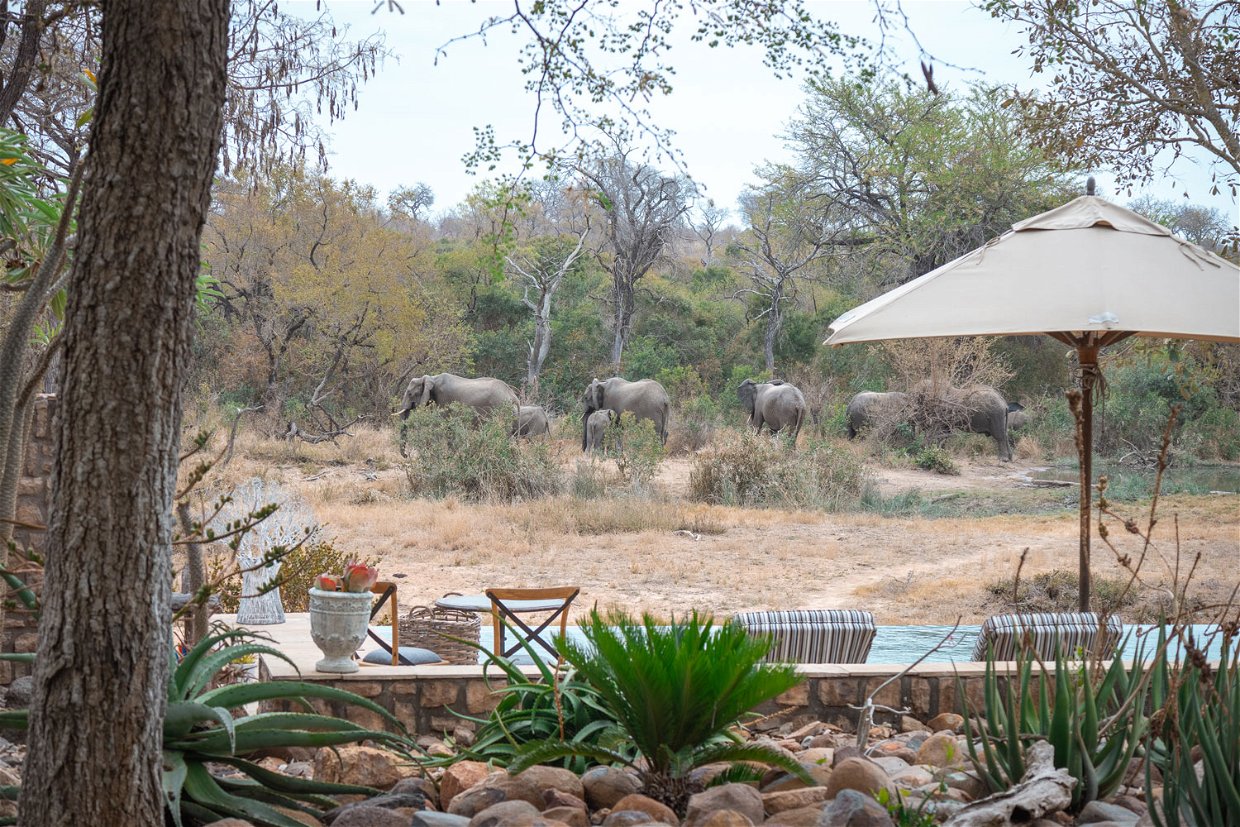There’s a certain rhythm to life in the bush — one that can’t be rushed or predicted. And for many guests at Shumbalala Game Lodge, the most meaningful moments aren’t always the ones that make it onto Instagram. A real safari is about more than ticking animals off a list. It’s about the process — the waiting, the watching, the wondering.
Essential Tips for a Winter Safari in South Africa’s Greater Kruger

Welcome to winter in the Lowveld! Your daily forecast for months June through July is as follows:
An icy morning chill from 5am, brisk spring freshness around 10am, glorious midday summer sunshine at 2pm, followed by a brisk autumn chill between 5 and 6pm.
It’s a bit of a weather-y rollercoaster, but it’s easy to add and shed clothes as the temperatures rise and fall, and the predictability to our winter-time weather is just one of the many great reasons this season is a favourite for most international safari-goers. Winter is our dry season, so aside from the occasional misty morning, this time of year delivers the clearest, brightest, bluest skies, and the most extraordinary sunsets.
 Image credit: Tania Steyn
Image credit: Tania Steyn
The orange-grey landscape pops with fiery winter-blooming aloe flowers and candy pink impala lilies, and while it may not buzz with the vibrant green growth of the summer months, it doesn’t buzz with much bug-life either. Mosquitoes and other biting beasties are far less bothersome in the cooler weather, and the relative sparseness of the landscape means better visibility, making it so much easier for our guides and trackers to follow and find those bucket-list animals. These animals, predators especially, also aren’t in any rush to seek out shady spots before the sun gets too high, so your chances of spotting them on the move in daylight are decidedly better.
 Image credit: Jordi Woerts
Image credit: Jordi Woerts
Birders among you may worry about missing out in winter months, but birding here in winter is still fantastic. The Lowveld area is extremely rich in diversity, and in the absence of our migratory bird species our resident feathered friends get their chance to shine. White-browed scrub robins, crested barbets, grey-headed bushshrikes, and crested francolins lend their voices to the soundtrack of the season while brown-hooded kingfishers, lilac-breasted rollers, and little bee-eaters paint the muted scenery with their brilliant plumage.
 Image credit: Jordi Woerts
Image credit: Jordi Woerts
As summer rainfall ceases and riverbeds, puddles, and other natural pools dry up, permanent water sources, like the camp waterhole (and swimming pools!) become hubs of activity throughout the day and night. Birds, elephants, and prey animals come and go constantly, and you’ll often find crafty predators either following on their heels or lying in wait nearby. They also just pop by for a quiet drink on their rounds, so it’s worth keeping an eye out whenever you’re in camp.
 Image credit: Tania Steyn
Image credit: Tania Steyn
Beyond all these excellent reasons to visit our piece of paradise in the dry season, there’s also a unique cosiness about a winter-time safari you just can’t beat. There are decadent dinners and evenings curled up in the luxurious comfort of your suite or beside a crackling wood fire beneath the stars, and snug blankets and fleece-covered hot-water bottles on early morning drives. Arguably the best time of day is the morning coffee stop, when you get to shed your first layers and stretch out in the summer sun while your steaming morning-beverage-of-choice warms your bones. It’s heavenly!
 Image credit: Tania Steyn
Image credit: Tania Steyn
This time of year is truly magical, especially if you’re suitably prepared, so here are a few tips on what you should pack for a wintertime safari to the Lowveld:
- We’ve said it before and we’ll say it again: layers. Even if you’re accustomed to sub-zero temperatures, you might be surprised by the bite in our winter mornings on the back of an open safari vehicle, so it’s worth bringing along your gloves and a beanie. A warm jumper, long pants and a windproof jacket are a must, and if you’re sensitive to the cold, you’ll be grateful for thick socks, a scarf, and a long-sleeve top or two. We supply a blanket and have extra jackets on game drives in case you need them for extra warmth.
- As each day warms up, it can get hot enough to swim, so it’s a good idea to pack your swimwear, shorts and flip flops as well. And don’t forget that our winter sun still packs a deadly punch, so don’t forget your hat and sunscreen.
- Our dry season gets pretty dusty (it’s part of the reason the sunsets are so sensational) and the air is dry at this time of year, so chapstick and eye drops are a good idea. You’ll find soothing body lotion among the amenities in your suite.
- Bring along a light cloth, towel or buff to protect your camera gear from the dust. For safety reasons, remember to pack your cameras and binoculars as hand luggage. This includes batteries and battery banks - if you pack these in your main luggage, it might get left behind.
We look forward to welcoming you for your winter safari so that you too can experience the stuff that safari dreams are made of. See you soon!
Further Reading
If you’re planning your honeymoon and find yourself torn between golden beaches and something a little different, you’re not alone. The beach is a classic choice — but we’re here to let you in on a little secret: A honeymoon in the bush is something magical. And at Shumbalala Game Lodge, in the heart of the Thornybush Private Nature Reserve, it might just be the most romantic escape you never knew you...
At Shumbalala Game Lodge, some mornings come with coffee and a view. Others come with coffee and elephants. You never quite know which — and that’s part of the magic. The birds are calling, the air is crisp, and the day begins slowly, just as it should in the bush. Then, through the thickets, the unmistakable sound of movement. A soft crackle of leaves, the low rustle of branches — and then,...






Share This Post